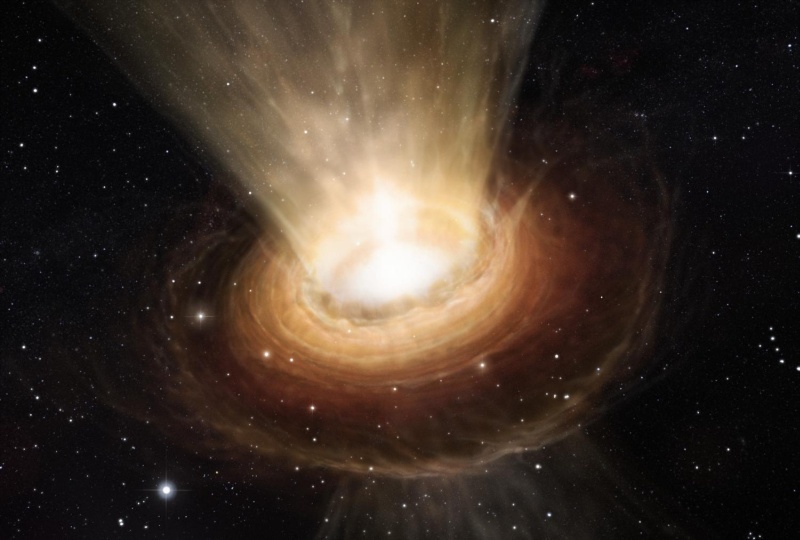Hairy black holes: scientists have shown how to extract information from a black hole

Dezhan Stojkovic, a physics professor, and PhD Anshul Saini from the University of New York at Buffalo, published a paper describing a solution to the problem of “information disappearance” in a black hole. Scientists claim that they were able to prove - the information does not disappear, and can be obtained from black hole radiation particles.
Black holes are unique space objects. The concept of a celestial body of such a monstrous mass, which holds even the light, was put forward by John Mitchell at the end of the 18th century. Mathematically, their existence was predicted 100 years ago as part of the development of the General Theory of Relativity, but at first they were perceived only as a mathematical curiosity. Seriously, the prediction of their properties as real-life objects began to be dealt with only in the second half of the 20th century. Now they are considered an ordinary phenomenon. A massive star, having spent all its energy, collapses inward, as a result of which a black hole appears. Also, these objects can be found in the center of almost any galaxy.
The theorists, it turns out that any black hole is characterized by only three parameters - mass, angular momentum and electric charge. From this it follows that two black holes with the same parameters are indistinguishable from each other. And also it is impossible to say what it was “made of” - information about any object that fell into a black hole disappears and leaves no trace. One of the theorists described this feature as “ a black hole has no hair ”.
')
The famous scientist Stephen Hawking conducted a lot of theoretical studies related to black holes. In particular, he proved that black holes can evaporate. At first glance, it seems that even the light cannot avoid the black hole, it can only grow. However, Hawking showed that since particles and antiparticles constantly appear on the hole boundary in a vacuum, one particle of a pair can fall off the hole horizon, and the second one can escape from it. From the point of view of an external observer, it will look like evaporation.
Theoretically, the hole can evaporate completely - but then it turns out that all the information about the matter that fell into it earlier disappears without a trace. And this contradicts the main provisions of quantum mechanics (unitarity of operations), which state that such information should in principle be recoverable. Therefore, the solution to the problem of preserving information is a necessity from the point of view of building a consistent and internally consistent quantum theory of gravity . Physics has been fighting for this theory for almost 40 years - it should help unite all the fundamental interactions in nature, as a result of which the “theory of everything” should appear.
So far this theory is not available to theorists, but researchers from the University at Buffalo describe how the interaction of particles “emitted” by a black hole can provide information about a substance that has entered the black hole.
Source: https://habr.com/ru/post/365341/
All Articles